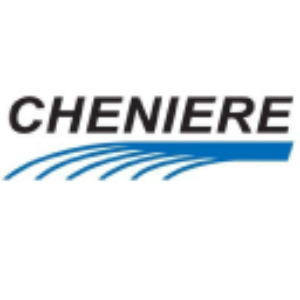ADCC Pipeline Begins Commercial Service
Rhea-AI Summary
The ADCC Pipeline commenced commercial service on July 1, 2024, providing approximately 1.7 Billion cubic feet per day (Bcf/d) of natural gas transportation capacity to the Cheniere Corpus Christi Liquefaction facility. The pipeline facilitates access to Permian and Eagle Ford gas volumes, enhancing natural gas infrastructure in Texas and supporting U.S. LNG exports globally.
The project is a joint venture, with Whistler Pipeline owning 70% (shared among WhiteWater, MPLX, and Enbridge) and a Cheniere Energy subsidiary owning 30%. This new infrastructure is expected to reduce flared volumes in the Permian Basin and strengthen LNG export capabilities.
Positive
- The ADCC Pipeline provides 1.7 Bcf/d of natural gas capacity to Cheniere Corpus Christi.
- Enhances natural gas infrastructure in Texas.
- Supports U.S. LNG exports to global markets.
- Expected to reduce flaring of Permian Basin gas.
Negative
- None.
News Market Reaction 1 Alert
On the day this news was published, LNG gained 0.65%, reflecting a mild positive market reaction.
Data tracked by StockTitan Argus on the day of publication.
The ADCC Pipeline further enhances the natural gas infrastructure in
The ADCC Pipeline is a joint venture owned
ABOUT THE ADCC PIPELINE
The ADCC Pipeline is an approximately 40-mile, 42-inch intrastate pipeline that transports natural gas from Whistler Pipeline's Agua Dulce Header to Cheniere's Corpus Christi Liquefaction facility.
ABOUT THE WHISTLER PIPELINE
The Whistler Pipeline is an approximately 450-mile, 42-inch intrastate pipeline that transports natural gas from the Waha Header in the Permian Basin to
About WhiteWater
WhiteWater is an Austin, Texas based infrastructure company, and operator of the Whistler Pipeline. WhiteWater is partnered with multiple private equity funds including but not limited to I Squared Capital. For more information about WhiteWater, visit www.wwdev.com.
About MPLX LP
MPLX is a diversified, large-cap master limited partnership that owns and operates midstream energy infrastructure and logistics assets and provides fuels distribution services. MPLX's assets include a network of crude oil and refined product pipelines; an inland marine business; light-product terminals; storage caverns; refinery tanks, docks, loading racks, and associated piping; and crude and light-product marine terminals. MPLX also owns crude oil and natural gas gathering systems and pipelines as well as natural gas and NGL processing and fractionation facilities in key
About Enbridge Inc.
At Enbridge, we safely connect millions of people to the energy they rely on every day, fueling quality of life through our North American natural gas, oil and renewable power networks and our growing European offshore wind portfolio. We're investing in modern energy delivery infrastructure to sustain access to secure, affordable energy and building on more than a century of operating conventional energy infrastructure and two decades of experience in renewable power to advance new technologies including hydrogen, renewable natural gas and carbon capture and storage. Headquartered in
About Cheniere
Cheniere Energy, Inc. is the leading producer and exporter of LNG in
For additional information, please refer to the Cheniere website at www.cheniere.com and Quarterly Report on Form 10-Q for the quarter ended March 31, 2024, filed with the Securities and Exchange Commission.
![]() View original content to download multimedia:https://www.prnewswire.com/news-releases/adcc-pipeline-begins-commercial-service-302195531.html
View original content to download multimedia:https://www.prnewswire.com/news-releases/adcc-pipeline-begins-commercial-service-302195531.html
SOURCE WhiteWater








